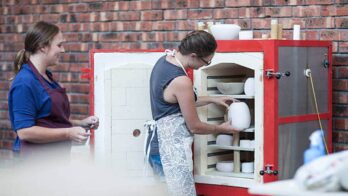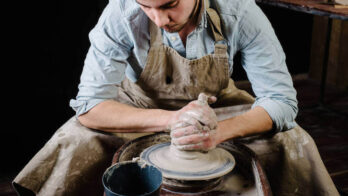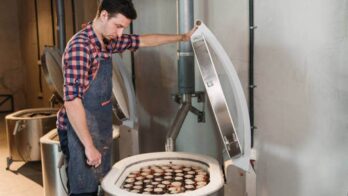We need a special kind of clay that is easy to use and won’t dry out for those who can’t resist the urge to craft and create. Air-dry clays are those types of clay. But with so many different brands, how do you decide which is the best air-dry clay for your needs?
Here, we will review the best air-dry clay available and tell you why they are so much fun!
What is Air-Dry Clay?
Air-dry clay is a form that doesn’t require firing in a kiln to dry like traditional clay. It is often called non-drying clay or self-hardening clay because they contain enough water to allow artists to sculpt or mold them at the time of manufacture.
It gradually dries out until it reaches a stage where it can no longer be worked with, usually after about one week. This drying out must be done in an airy location until water no longer evaporates.
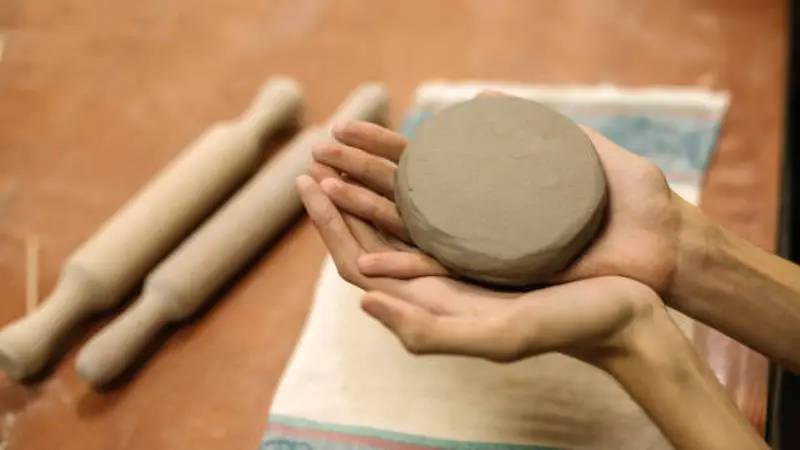

Our Air-Drying Pottery Clay Top Picks
As you can see, there are several things to consider when choosing the best air-dry clay for your needs. They vary widely in price and quality, so knowing what to look for will help you choose the right one without compromising on quality.
Now that we’ve covered some basic information let’s look at types of air drying clay and the best brands out there.
DAS Air-Hardening Modeling Clay
DAS Air-Hardening Modeling Clay is good for beginners and skilled crafters alike. It isn’t initially very flexible, but after some water and manipulation, it becomes more pliable.
Because of the fibers in the clay, pieces created with it are sturdy and less likely to crack once dry. It dries quickly (in 4 to 6 hours), but I recommend allowing 24 hours for larger pieces before you paint or varnish them to protect their finish.
DAS air-hardening clay is available in 2 colors, white and terracotta. It’s easy to work with and can be used anywhere from picture frames to jewelry boxes.
Das clay has fine, even textures that are simple to smooth. You can use it with wood, cardboard, terracotta and when it comes to decorating, you can use poster paint and varnish.
Jovi Air-Dry Modeling Clay
Jovi air-dry modeling clay has a smooth texture, so it’s easy to work with and can be used for many types of projects besides sculpting. It is also less sticky and doesn’t stain like traditional clays.
In addition, the odorless, non-toxic modeling clay is composed of natural components and is free from gluten, making it a great choice if you want air-dry clay for molds.
Drying time is around 24 hours, and it comes in white, terracotta, and original gray.
This clay starts out soft and is easy to knead and shape. Create forms by hand or use to cover frames made of wire, wood, or cardboard. You can paint, varnish, polish or cut once dry!
Amaco Stonex Clay
The Amaco Stonex air-dry clay is premoistened and ready to use. It is soft, pliable, and easy to model and adapts well to water while scoring as it dries out.
It is excellent for hand building, sculpting, and wheel throwing too. Amaco Stonex air-dry clay dries within 24-48 hours, hardening to a natural white color that can be painted or colored with acrylics or liquid crayons.
Objects modeled from Stonex White Clay air-harden without the need of firing or baking. No kiln firing is required!
Amaco Stonex is suitable for both molding or turning and can be shaped by hand or tools. You can finish decorating with school paints, temperas, acrylics or even liquid crayons.
Craftsmart Natural Clay
One of the benefits of earthen air-dry clay is its longevity, and this Craft Smart item is a dependable option for extending modeling, sculpting, and ceramic projects.
Simply moisten the clay with a bit of water and keep working. This natural clay is strong enough to use on a potters’ wheel, making it ideal for wheel-throwing. In addition, you can use modeling tools to add texture to a surface if desired.
Craftsmart Air-Dry Clay is 100 percent natural, non-toxic, and clean to work with, and it can strengthen it by applying a layer of shellac to the completed item once it has dried.
This clay is great value and will help beginners and experts alike create beautiful clay creations. This holding clay is deal for sculpting and hand modeling.
Activa La Doll Premier Air-Dry Clay
Activa La Doll air-dry clay is a stone clay that dries by evaporation without shrinking or hardening. It is incredibly lightweight, malleable, and workable and designed to produce finely detailed and intricate results.
Activa La Doll air-dry clay contains no toxic ingredients, making it safe to use with children and families, and it does not require baking which makes it environmentally friendly.
It’s suitable for many types of paint, including acrylic, oil, and water-based ones. It also takes conventional dry finishing powders and liquid paints, and wet varnishes for a more appealing finish.
La Doll Premier is a superior air dry, natural stone clay for intricate and ultra-fine detail work. It is the preferred choice of world renown professional doll artists and ceramicists.
Crayola Air-Dry Clay
Crayola air-dry clay is easy to use and manipulate, which you can use virtually any traditional clay building technique with it. In addition, the all-natural clay is non-toxic and safe for artists of all ages, drying in as little as 24 hours to a hard, white surface that allows painting or coloring with markers.
It’s also the best air-dry clay for kids because Crayola air-dry modeling clay isn’t toxic or flammable. Crayola air-dry clay also comes in a variety of bold colors, from traditional earth tones to vibrant colors that will make your creation stand out from the others.
No kilns, no ovens, no baking, just non-toxic fun.
Crayola is smoother, finer and less sticky than traditional clay. Use with techniques like pinch, coil, slab, score-and-weld. This natural white earth clay hardens to a solid state.
So which type of air-dry modeling clay should you get? That depends on your specific needs and desires. But no matter which one you choose, you’ll have a good time while you create something unique. Keep reading for some helpful advice.
What to Consider When Choosing the Best Air-Dry Clays
There are many different brands of air-dry clay on the market, but not all are made equal. Some are too hard or gummy to work with, while others crumble apart. Picking the right one can be a challenge, especially if you are new to this type of clay. Here are some things to consider when choosing:
Sculpting Ability
Some brands of air-drying clay take longer than others to dry out and become unusable for sculpting. However, it has a shorter sculpting time and is suitable for beginners because it will allow them to shape it before it dries out completely.
Washability
Not all dry modeling clays are washable. You want one that can be scrubbed or washed clean without staining if you plan to use colors for your dry clay project. Also, if you plan on using air-dry clay for making molds, you need to make sure that it is moldable and washable.
Color
Some brands come in attractive color options straight from the package. Others can be mixed with water and acrylic paint to create unique, bold colors. Keeping a variety of colors on hand will allow you to make more types of projects.
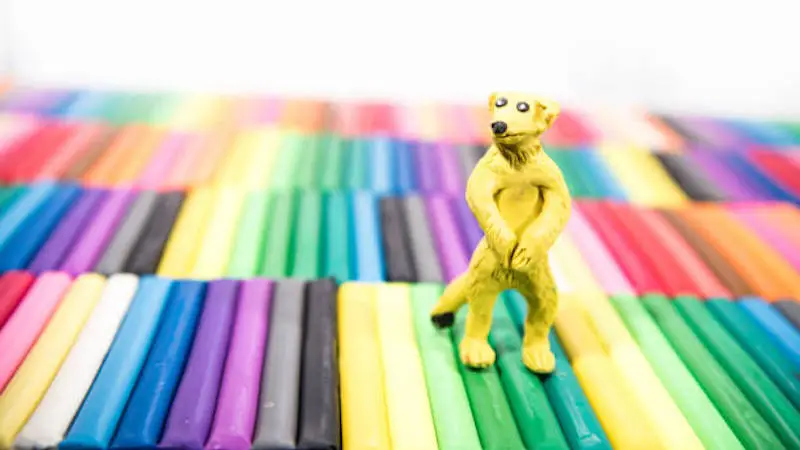

Price
Air-drying clay prices vary from brand to brand, as well as the size of the package. It would be best to consider which brands you want to buy and how much product you will need before setting a budget before you buy.
Texture
Some are very smooth and silky, while others are coarse or lumpy. If you plan to sculpt, pick one that has a fine texture to prevent spilling or crumbling.
Durability
Depending on the project type, durability may be necessary. You probably don’t want to buy one that is too fragile for your proposed project.
These qualities can be important when choosing which is best for you, so consider each one before picking a brand.
What will you use your air dry clay to make? If it’s for use in a classroom, you will want to choose the best for your needs. If it’s for kids, then durability and washability may be more important than color or price.
What to Make with Air-Dry Clay
You can make many things, including pots and planters for your garden, candle holders and other household decorations, and beautiful jewelry. Air-dry clay is excellent for kids because it won’t hurt to get dirty or wet and doesn’t require firing in the oven or a kiln.
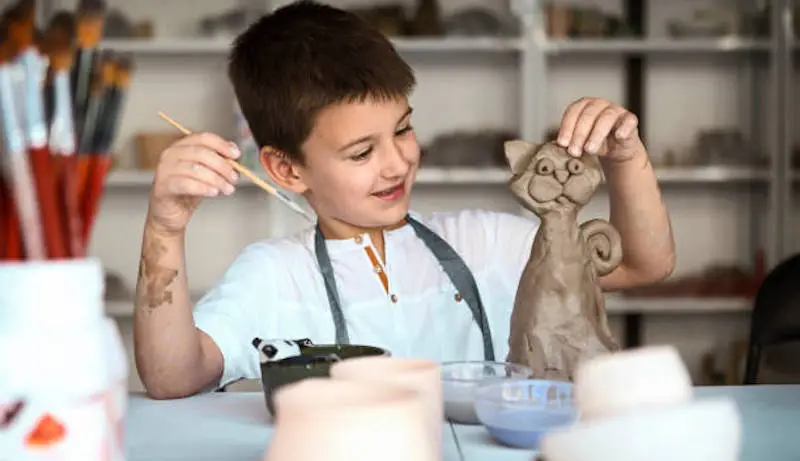

Here are some great ideas of things you can make:
Molds and Stamps – Air-dry clay is often used for making molds or stamps. You can press it into any surface with a smooth texture to create the mold of that shape, then flip it over onto your project surface to stamp an image onto your finished piece.
Modeling Shapes – Modeling shapes is a great way to start if you are new. You can make simple shapes like balls, eggs, or sticks, then use them to create figures of people, animals, or any other playful design you want.
Ornaments – Air-dry clay comes in many colors and can be glazed to protect it from moisture, so it is a natural choice for creating Christmas ornaments. Kids can press into molds to make decorations that are easy to hang on the tree, and adults can paint them any way they want.
Embellishments – The smooth surface and variety of colors make it an ideal choice for creating decorations for other types of projects. You can also use it to cover up mistakes, like two pieces of paper that don’t quite match up, or as a base layer on which you build another project by painting or gluing other objects to the surface.
Air-Dry Clay Tips & Tricks
This type of clay is a popular medium for both children and adults alike. It’s versatile, easy to use, and affordable. Here are my top tips and tricks that I’ve learned while exploring this fun material!
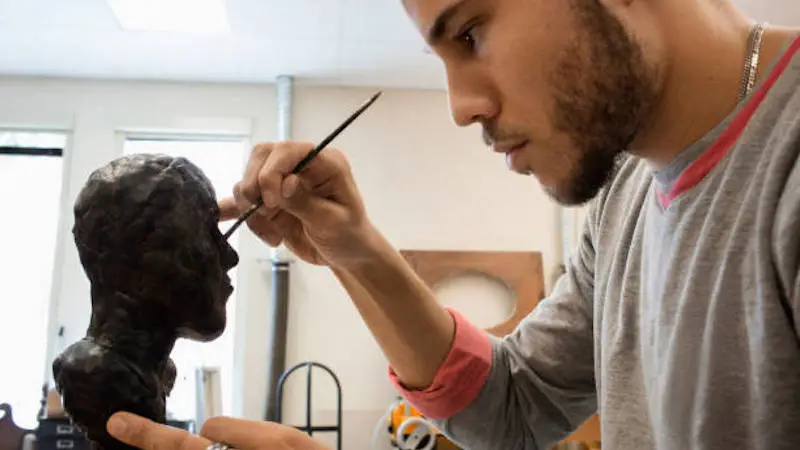

Coloring Air-Dried Clay
You can color Air-dry clay with water-based paint. Water-based paints are usually the best choice for molds because they stick to oil paints but do become brittle when they dry, possibly cracking your mold. Here are some top tips for color mixing:
Dilute with water: if you want a light color, mix some clay with equal parts of water to make the paint easier to apply. You can also use it as a sealant if you don’t dilute it.
Staining: If your clay is darker, you can use some as a dye to create lighter colors. Mix some clay with equal parts of water and apply it to your project with a paintbrush or toothpick.
Add air-dry mix: You can also take any air-dry mixes that you already have (like melted crayons) and mix them in to create new color options.
Adding glitter and sparkle can be a lot of fun. The best way to add sparkle is by using paint that contains glitter particles, like acrylic paints.
How to Paint Air-Dry Clay
You can paint it with any water-based paint. If you want to add a shimmery or sparkly effect, mix in a small amount of metallic paint when you are ready to color. Air drying clay does not accept oil paints, so use it as a sealant instead of coloring if you prefer to use oil-based paint.
Preserving And Storing
Unused clay can be stored in airtight containers if you are not using them right away. However, if exposed to air, dirt, or moisture for too long, it will begin to activate and become sticky again, so airtight storage is essential if you plan to make clay ornaments.
Conditioning Air-Dry Clay
If your clay becomes too sticky, it can be challenging to work with and may not hold up as well as it should. Luckily, if your clay is too sticky, it can be conditioned to make it easier to sculpt and hold its shape. So first, prepare it by kneading in some clay dust until it has regained its former consistency.
Frequently Asked Questions About Air-Dry Clay
How to Soften Air-Dry Clay
If your clay has been sitting and it’s become too hard to work with, try running a rolling pin over the surface of an unfinished piece to soften it up. You can also leave it in a plastic bag with a bit of water overnight if you want to speed up the softening process.
How to Keep Air-Dry Clay From Drying Out
If your clay is exposed to air for too long, it will dry out and will not hold its shape as well and may become difficult to condition properly, so try protecting your finished pieces by covering them with a plastic bag or a layer of masking tape.
How Long Does Air-Dry Clay Take to Dry?
It can take anywhere from two hours to two weeks, depending on the type of clay you use and environmental conditions (humidity and heat). Clays that come in a block or thin sheet tend to dry faster than clay molded into shape.
How to Make Air-Dry Clay Dry Faster
Drying clay faster is as simple as using a fan and placing it in a warm, dry area. You can also use fans to help it dry evenly, which is particularly useful when making larger objects that would take a long time to completely dry. However, try not to use a hairdryer or the clay can crack quickly.
How to Make Air-Dry Clay Stick
If you want to stick different objects together, apply a layer of the modeling clay in the area where you want them attached and let it dry. You can then glue or paint another object onto the blocking clay.
How to Seal Air-Dry Clay
Pieces that you will expose to moisture should be sealed with either acrylic clear coat or polyurethane. You can also seal it with varnish or shellac, but you must apply these products very carefully.
How to Glaze Air-Dry Clay
Glazing gives it a uniform sheen, protects it from moisture, and helps to fill in any minor imperfections. air-dry clays must first be sealed before they are glazed. Then, apply a thin coat of glaze and let it dry before applying another. After that, you can glaze it with acrylic gloss paint or any oil-based varnish.
Conclusion
Air-dry clay is one of the best materials for sculpting and making art. You can use it to make various objects with little effort, and it’s an inexpensive material that is versatile and easy to use.
With just a little bit of practice, you will soon be able to work with air-dry clay like a professional artist!
We hope you enjoyed the article and gained some useful knowledge. Please feel free to share this article with your friends if you thought it was interesting or useful.
Of course you hang around and check out these other helpful buying guides.
Stay creative, stay safe, and have fun!



Enter your email below to get our FREE beginner friendly tips.
By entering your email address you agree to receive emails from Potters Passion. We'll respect your privacy and you can unsubscribe at any time.







